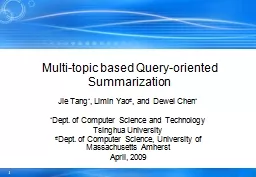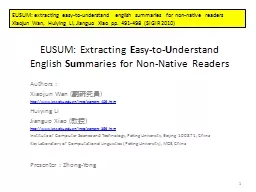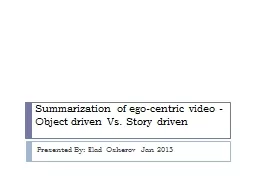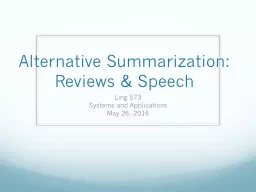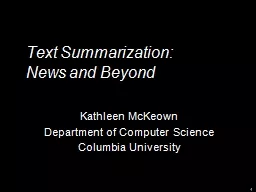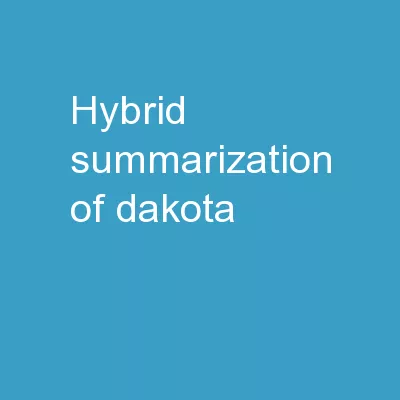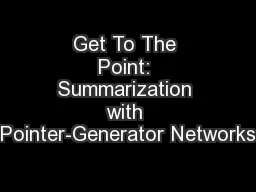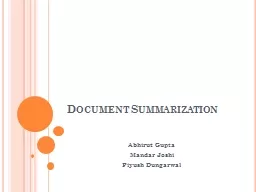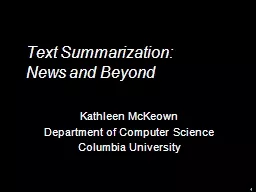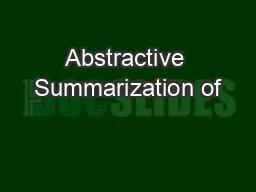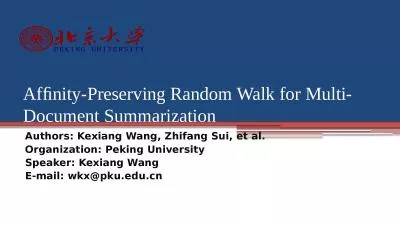PPT-Multi-topic based Query-oriented Summarization
Author : celsa-spraggs | Published Date : 2017-01-18
Jie Tang Limin Yao and Dewei Chen Dept of Computer Science and Technology Tsinghua University Dept of Computer Science University of Massachusetts Amherst
Presentation Embed Code
Download Presentation
Download Presentation The PPT/PDF document "Multi-topic based Query-oriented Summari..." is the property of its rightful owner. Permission is granted to download and print the materials on this website for personal, non-commercial use only, and to display it on your personal computer provided you do not modify the materials and that you retain all copyright notices contained in the materials. By downloading content from our website, you accept the terms of this agreement.
Multi-topic based Query-oriented Summarization: Transcript
Download Rules Of Document
"Multi-topic based Query-oriented Summarization"The content belongs to its owner. You may download and print it for personal use, without modification, and keep all copyright notices. By downloading, you agree to these terms.
Related Documents

